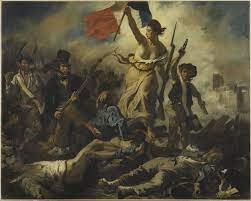The Role of Art in Social Movements: A Catalyst for Change
Art and social movements have been intrinsically linked throughout history. From the poignant protest songs of the Civil Rights Movement to the defiant street art of today's climate justice campaigns, art has consistently served as a vital tool for expressing dissent, fostering unity, and catalyzing change.
Art as a Medium for Dissent
At its core, art is a form of communication. It allows individuals to convey complex emotions, experiences, and ideas that might otherwise be challenging to express. In the context of social movements, art becomes a medium for dissent—a way for people to voice their criticisms of existing systems and demand change.
Take, for example, the political posters that have become a staple of protests worldwide. These artworks distill complex issues into powerful visual messages, drawing attention to injustices and rallying viewers to the cause.
Art as a Unifying Force
Art also plays a crucial role in building solidarity within social movements. Shared symbols, motifs, and narratives can foster a sense of collective identity, helping disparate groups to unite in pursuit of a common goal.
Consider the iconic "Obey" campaign by Shepard Fairey. The striking imagery and bold messaging of this campaign have been adopted by various movements, serving as a unifying symbol of resistance and defiance.
Art as a Catalyst for Change
Perhaps most importantly, art can act as a catalyst for change. By challenging norms, sparking conversations, and inspiring action, art can influence public opinion and drive social and political transformation.
A prime example is Banksy's street art, which uses humor and irony to critique societal issues. These works not only stimulate dialogue but also inspire viewers to question the status quo and consider alternative perspectives.
Conclusion
The role of art in social movements is multi-faceted and profound. As a medium for dissent, a unifying force, and a catalyst for change, art is not merely a byproduct of social movements but an integral part of their strategy and success. As we continue to navigate an ever-changing social landscape, the power of art to inspire, challenge, and unite us remains as relevant as ever.
